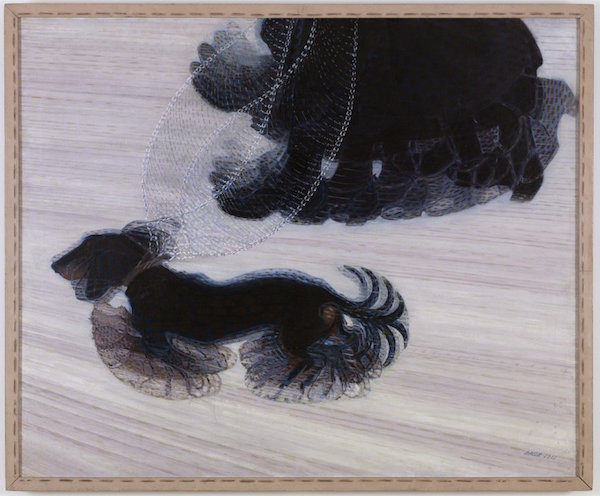
We’ve discussed the importance of a topline before, and how it’s not the same as a dog’s back. Now we want to mention that watching a dog’s topline while the dog is gaiting is one of the quickest visual clues we have (shorthand, if you will) to evaluating the dog’s soundness. Mind you, it’s important to know what a proper topline is for the dog’s breed (some breeds have an arched topline), and also to realize that there is no substitute for assessing a dog’s structure with one’s hands. Often, however, our hands will know where to go, and what to look for if our eyes have told us there’s something that needs more investigation.
A dog that floats across a room or show ring has a topline that moves not in parts (as if it was reticulated) but as one smooth unit, and this is usually a well angulated dog whose front and rear are balanced. A dog that is high in the rear and seems to be gaiting downhill, however, often lacks reach in the front assembly, and has an over-angulated rear for the front the dog has. Put in visual terms, the dog’s rear seems to want to get to the destination before the front of the dog does. To keep her rear legs moving on a forward trajectory, the dog has to compensate because her hind legs have a longer stride than does her front, and that results in the dog moving “high in the rear.” Sometimes with such movement (and depending upon the breed), the dog’s tail is often set low off a steeply angled croup, as well. Then there’s the dog that has a bouncy, “trampoline” type topline that wastes energy moving up and down, and not forward. It can be symptomatic of a topline that arches from the withers on down.
Many topline problems start, and are most visible, at the rear assembly. Length of the hocks, bone length, and muscle condition can also impact a topline. Always watch the dog gait at a proper speed for the breed. To the swiftest does not belong the prize. Not always. A multitude of sins can be disguised by moving a dog at breakneck speed, and there’s less place to hide poor movement, when the dog is moved out appropriately.
Chapters and chapters have been written devoted to toplines, and by no means does this two paragraph post do justice to the subject. It merely serves to encourage you to look, really look, at this important aspect of its soundness, and then learn more about it from books on structure.
“Dog on a Leash” completed in 1912 by Giacomo Balla
